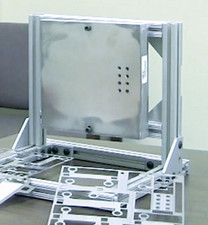No. 19: Heat pumps with half the carbon footprint

For American troops stationed in desert locations like Afghanistan, air conditioning is a critical necessity. But delivering the fuel required to run air conditioning is expensive and can endanger supply convoys.
An innovation from Georgia Tech may provide a cost-effective, eco-friendly solution. Dr. Srinivas Garimella developed a new kind of a heat pump that uses waste heat — like that from a generator — to provide cooling.
This style of heat pump has been in use for a century, but only in large-scale industrial applications. That’s because its essential components are huge, sometimes making the heat pump as large as a small building.
But Dr. Garimella overcame this obstacle. His heat pump uses “microscale heat transfer,” combining all components into one. Inside this single component, refrigerant and other fluids flow through minuscule passages – the width of several human hairs – etched into thin sheets of metal.
One of these sheets doesn’t provide much cooling, but tens of them stacked together do. So a finished unit is easy to install at home or transport to an army base.
The U.S. Department of Defense believes Dr. Garimella’s heat pump could reduce the amount of energy to run air conditioning by 50 percent compared to conventional systems. That’s why the U.S. Navy and the Department of Energy (ARPA-E) together have invested nearly $5 million in Dr. Garimella’s research.
With support from GRA, Dr. Garimella is working on bringing the technology to market. Several energy companies across the U.S. are planning to field test the new heat pumps later this year.
As temperature extremes become more commonplace, Dr. Garimella’s heat pump could be an invaluable solution: more energy-efficient comfort for people across the globe.
